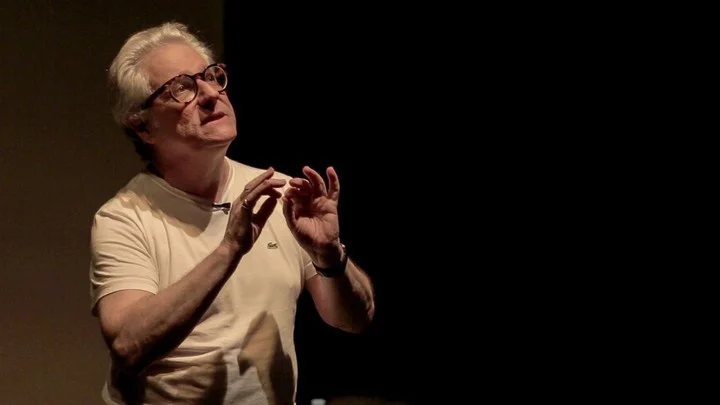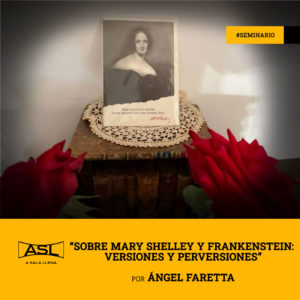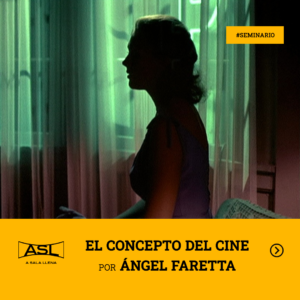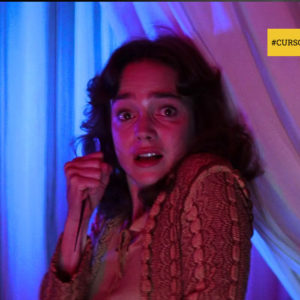Book Title: Hitchcock at Work
Author: Ángel Faretta
Language: Spanish
Publisher: ASL Ediciones
Collection: Auteurs
ISBN: 9789877616354
Buenos Aires, 2021
256 pages
Book Title: Hitchcock at Work
Author: Ángel Faretta
Language: Spanish
Publisher: ASL Ediciones
Collection: Auteurs
ISBN: 9789877616354
Buenos Aires, 2021
256 pages
“HITCHCOCK AT WORK”: HITCHCOCKIAN GLOSSARY
CAMEO
Beyond the anecdotal, given that Hitchcock has employed the resource to cover himself not so much with worldliness, but with numerosity, to be fully all. To seek identification with a singular person, being he himself a major singularity. Of course it is easy to deduce that if his dictum, where the director-auteur takes the place of God in a fiction film, he, like in scripture must appear as a character.
As with Velázquez, Cervantes and so many others, in Hitchcock we have the same type of signature. The Concept of Cinema differentiates him from such high antecedents. His complete mimesis before anything. In cinema we attend to an imitation of life as for the objects-action, as Jacob von Uexkull would say. It is not the story-image of Pavese but the action seen as “motion” and “emotion”, given that in the language where he deployed his most finished concretion, one comes from the other: it is the movement that accordingly motivates emotion. What we have called taxic capacity in The Concept of Cinema. So, the cameo, rather than a superstitious staging, or quote, or hint, is the last ratio of the auteur’s capacity of being part of his creation, which by the way ––as we have seen–– is the motive that drives Rear Window.
So the cameo is a kind form of the creator’s passion within his creation. It is a pericope, a reduction to a simple and seminal form of being in the work. It is the mystery of incarnation, played as charade. It is the quia of the Concept of Cinema over the qua of the Concept of Cinema; even better, that quia is the author to the qua, and its existence or mimetic transparence within the frame of the staged fiction is necessary and indispensable to encompass its totality.
HORROR VACUI – HORROR PLENI
The Horror into the Vacuum is a basso continuo in Hitchcock’s body of work. But it is not according to what has been expressed until then both in physics, since the Aristotelian tradition up to Pascal, nor even in art history, which refers to the taste for the disjointed of the most diverse iconographies. Since the Viking tradition, to the baroque (Góngora) or, as Mario Praz would say, of the Victorian interiors with their profusion of furniture, consoles, carpets and so forth. Here it refers to the metaphysical vacuum, to fall into nothingness, to be pushed into non-existence, to be directly possessed.
In Hitchcock horror is about what disappears, to what is set-up, to the open and unhidden. That which is invented. The plain air, the heights, the top, even though it has been attempted to be filled like the carved faces on Mount Rushmore.
Jonathan Kaplan, “Madeleine”, the interiors in Vertigo: the McKittrick house, the Argosy library, the museum, the National Sequoia Park. Rebecca, Mrs. Bates, Ambrose Chapel. The non-existing painting that Brandon “shows” to Janet. The desert road where Roger Thornhill waits. Mrs. Bates’ room. The train station and the hallways of the transatlantic, until getting to the pool in Marnie…
On the other hand, the Horror in its fullest, works dialectically with the previous horror. The attested, the mass, the gathering. The added, especially the undifferentiated. Let us say it plays the agonic card between the nothingness, the false, the invented and the non-existent, as set-up, falling accordingly into what has been attested, the amorphous of an undifferentiated crowd. An anonymous totality. Here making pendant with the plot itself.
The turned-off cigarette in the egg yolk that spills like a “soft clock”. The other assassin found at the other side of the country who resembles Uncle Charlie. The open umbrellas that cover all the visual aspect. The patrons at Ernie’s. The birds.
MACGUFFIN
It might seem bold on our part to delve in the definition of this term, which the auteur itself has taken perfect care in clarifying its functioning. Is a material pretext, or situational that holds the plot together and allows the story to be displayed.
Naturally, this is the way it goes.
Now, this macguffin is also related to the absence of someone or to the invention of someone (Kaplan), or with the false identity of a character or agonist. That false culprit or “wrong man” that circulates as an objective correlate all over his body of work.
In such a way, the forged identity of Madeleine Elster and the ghostly double of Carlota Valdés. Here we center on the disappearances ––simulated–– of “Madeleine”, at the wharf, later with her first visit to Scottie’s apartment, especially with her disappearance at the McKittrick house, we see how the macguffin, without ceasing to be that pretext that the plot needs to hold the story together, becomes an epos.
The mythologeme or legend of the Holy Grail has a central significance. It is something, an object, cup or chalice, which does not matter here; it does matter that it contains the blood of Christ during his agony. That it is something, a container that successively in this time, without mythical time, disappears once it is found, and therefore engages its pursuit over and over again. When it is found, a phase of the mythologeme is reached, but this is completed with its new and cyclical disappearance and new pursuit, and so forth.
Here the characters and possible witnesses of the false culpability of Balestrero and his search, optimist at first and later desperate, that leads to madness, to the borderline, to one of the two participants of the quest ––Mrs. Balestrero––, can guide us in our interpretation.
In the same way Rebecca’s ghost or ghosts, Mrs. Bates, et al. are technically macguffins, and mythologemes symbolically, variables of the myth and the legend of the Holy Grail.
This motive for the quest once and again of the Grail holds and maintains with its variables a central episode in its representation system. The one night lodging in what is called “the chapel of pain” and similar figures or locations… It is a rite of passage related to spending the night at a solitary and abandoned construction site, with a dead body or a ghost. But it is introduced to the Arthurian hero as someone absolutely normal, hospitable and does not present any disquieting traits either; at least in this early phase.
CRAFT-UNOFFICIAL-HOBBY
In Hitchcockian economics there is a problematic triad composed by craft-unofficial-hobby. This is rooted, or is related, with fundamental elements of economics in the traditional sense, turned or inverted to understand and be displayed only in a material sense.
It has been already said that a spiritual etymon of this auteur, that includes also the strict concept of suspense, is to be suspended from the usual profession. Here is where the craft becomes unofficial, because it is rigorously about the profession in a liberal sense, which usurps the place of the craft in the traditional sense.
This goes accordingly with the function of the police in his films; short, useless, tardy, as it usurps the priestly function. So profession, not craft, and police, not priests, are the polar axes of his very complex concept of suspense.
After being suspended from their usual line of work (Jeff, Scottie, Devlin, Mitch, et al.), their agonists fall into the unofficial; that is the craft returning as something strange and missed, to these people that are nothing more than their craft/craftsmanship. The unofficial could be a variable of the perverse. The deviation from the direct ––verse: towards, path, goal–– down a shortcut or dark jungle, where the makings of this profession once stripped of its inanity, or perversion as craft, by being closed or suspended, cannot even seek refuge in something, a passing of the vacant time that remembers the traditional craft. It is then when the unofficial appears.
Naturally there is a third and false way out that is the hobby. This would be the lowest degree of collectionism or ground zero of bricolage. If not directly that collectionism and bricolage are forms of time wasting in Hitchcockian economics, as variables of those symmetrical escapes to the past as a golden age, and that other escape that is holding on to the present as the only thing existing. This present could also relate with historicism as a spiritual absolute.
If the essence of modern man is ––according to Eliade–– to think of himself as a merely historical being and, even more, that he himself is the one making that history, this polarity of the Hitchcockian characters and situations between the golden age and the absolute present, is the affirmation of such posture, be it in one or another sense. When not accordingly and according to what is convenient, like Uncle Charlie in Shadow of a Doubt.
This, on the other hand, would be the self-affirmation without any further ado that Christian tragedy exists. And beyond all the gibberish engaged by hellenists and linguists without any metaphysical comprehension, the Christian tragedy is not annulled neither by the incarnation, or by resurrection and not even by the concept of judgment day. Given that the Christian agonist, or the Christian tragic in his catholic phase, must set himself in a middle ground between the fictional fantasy of a return to the golden age/paradise lost, and the affirmation of an absolute historicism, which is none other than the sole affirmation of present time as History.
The story, the plot and the epos of this auteur is the controversial flipside to that History as a positive science.







